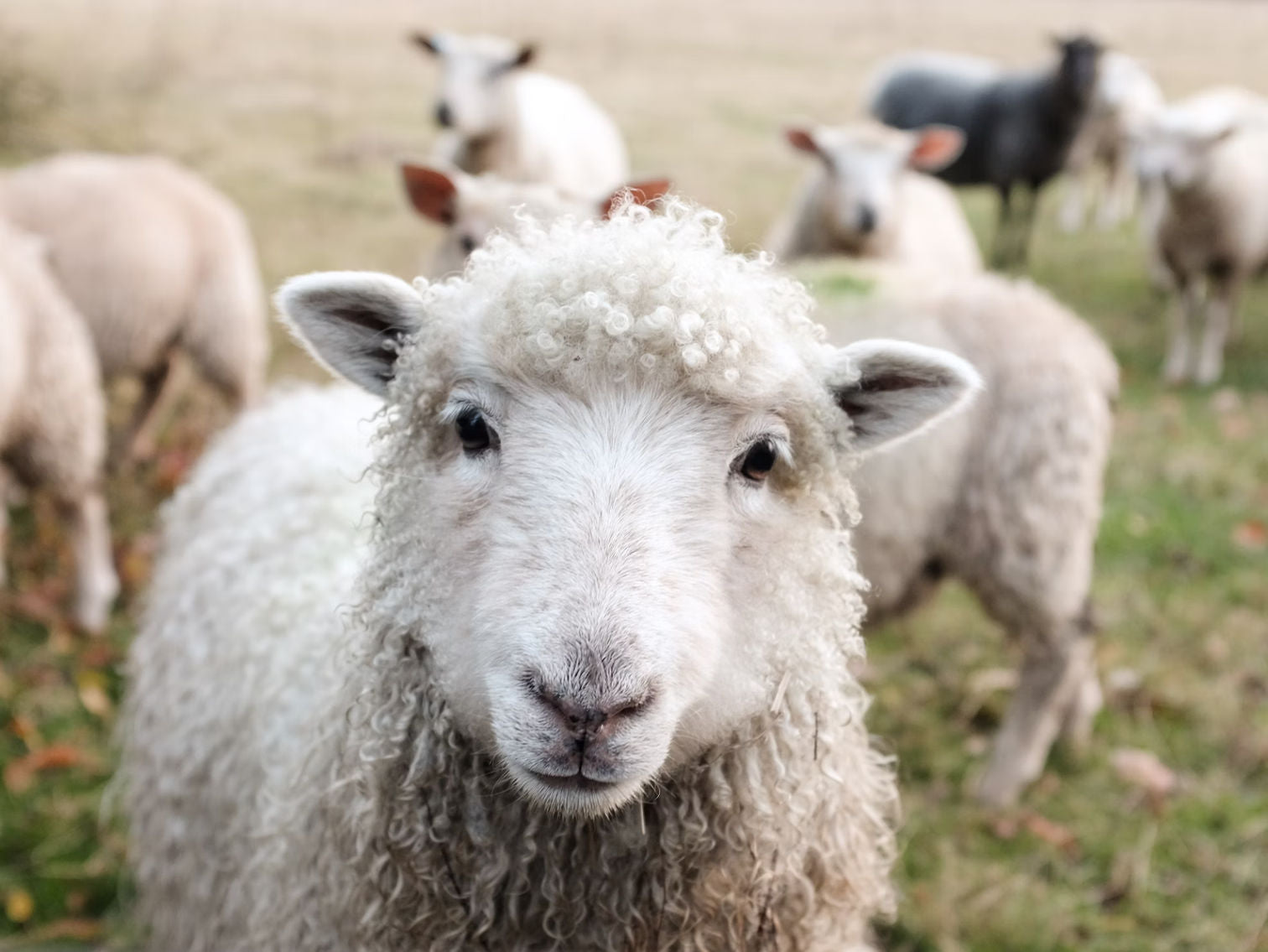
Written by Ben Chuang
Wool fabric, a versatile and timeless textile, has been an integral part of our clothing and textile industry for centuries. This natural fiber is renowned for its warmth, durability, and luxurious feel.
The use of wool can be traced back to 10,000 BCE when early humans began domesticating sheep for their meat and fleece. The use of wool in textiles can be traced to civilizations such as the Mesopotamians, Egyptians, and Roman Empire.
Out of 1,000 sheep breeds in the world, only a select few are used to produce wool for fine apparel. One example is the Merino, which is found in Spain and produces high-quality fiber. In 1789, King Charles IV of Spain gifted six Merino sheep to the Dutch government, allowing the material to spread throughout Europe. Later on, technological advancements in the Industrial Revolution helped popularize wool suiting and apparel to the masses.
Today, Australia is the largest source of Merino wool in the world, producing 80% of the global output.

The Magic of Wool Fibers: Nature's Insulation
Wool is a natural fiber that is commonly obtained from sheep fleece, although it can also be sourced from other animals such as goats (cashmere and mohair), rabbits (angora wool), and certain camel species (camel hair).
Wool fibers are incredibly soft, making them comfortable to wear against the skin. The secret to wool's warmth lies in its crimped structure, which creates air pockets that act as natural insulation. This insulating property ensures that wool keeps you warm in the winter and cool in the summer.
Wool is a favorite choice for high-quality suits, coats, skirts, sweaters, trousers, scarves, and even blankets. Its elegance and warmth make it a staple in the fashion industry. These are some of our favorite types of wool:
-
Wool flannel: Wool flannel is a loosely woven, soft fabric, typically made with worsted or woolen yarns. Flannel, like twill, is a type of fabric, while the checkered pattern that's commonly found on flannel shirts is called "plaid."

- Wool jersey: Jerseys are lightweight, stretchy fabrics that can be made from wool, cotton, or synthetic blends, and may be single or double-knit.
- Wool challis: Wool challis is a soft, lightweight fabric known for its smooth texture and fluid drape. Its fine texture allows for vibrant and detailed prints, making it a popular choice for women's dresses, scarves, and shawls.
- Worsted wool: "Worsted" wool refers to the specific spinning process used to create this type of wool fabric. It is spun from combed wool fibers, which are straightened and parallelized during the manufacturing process. This fabric originated from the village of Worstead in Norfolk, England.
- Wool crepe: A wool crepe is a wool fabric woven with twisted yarns, creating a distinctive crinkled or pebbled surface. The material is soft and comfortable but should be dry-cleaned to avoid unwanted shrinkage.
- Wool melton: Wool melton is a heavyweight wool fabric known for its dense, compact, and smooth material. This fabric is highly regarded for its durability, warmth, and ability to repel wind and moisture. It has a wide range of applications, especially in outerwear during cold winter months.
- Wool blends: Wool blends are fabrics made by combining wool fibers with other fibers. Wool blends are typically machine washable and easier to care for.

Fashion trends can change over time, but several classic and stylish types of men's wool suits and jackets tend to remain fashionable regardless of current trends. Here are some options to consider:
-
Navy Blue Suit: A navy blue wool suit is a timeless classic that exudes sophistication. It's versatile and can be worn for a wide range of occasions, from formal events to business meetings. Here's how to pair a blue suit with brown shoes.

- Charcoal Gray Suit: Charcoal gray is another versatile color that looks both elegant and modern. It's an excellent choice for business settings and can also be dressed up for more formal occasions. A few tips on matching a grey suit with a black shirt.
- Patterned Suits: Depending on your style and the context, you can consider patterned wool suits such as pinstripes, herringbone, or windowpane. These can add a touch of uniqueness to your wardrobe.
-
Slim Fit Suit: A slim fit suit is a modern and stylish option. It offers a tailored and streamlined look, which can be very flattering. However, be sure to choose a fit that suits your body type.

- Tweed Suit: Tweed suits are great for fall and winter. They have a textured, rustic look that can be both fashionable and functional in colder weather.
When it comes to timeless elegance and sophistication, few wardrobe staples can match the versatility and charm of a well-tailored wool suit. But the key to making a wool suit truly shine lies in knowing how to pair it with the right accessories and garments.
Dress Shirts
-
Crisp White Dress Shirts: A classic white dress shirt is a timeless companion to a wool tweed suit, adding an air of sophistication and cleanliness.

-
Light Blue Dress Shirts: Light dress blue complements the richness of a dark wool gabardine jacket and offers a refreshing contrast. Browse a selection of our favorite light blue shirts for more inspiration.

Ties and Accessories
-
Solid Color or Patterned Ties: Elevate your suit with a slim fit tie that complements the color of your suit.

-
Pocket Squares: A well-folded pocket square adds a touch of flair to your ensemble. Here are the most popular pocket square folds.

Footwear
- Classic Leather Oxfords: These shoes are the perfect match for a formal wool suit. For example, you may try pairing brown Oxfords with a tweed or houndstooth wool coat.
- Loafers: For a more relaxed look, consider stylish loafers in a complementary shade.
Care Instructions for Wool Coating
Caring for wool clothes properly is essential to maintain quality, appearance, and longevity. Wool is a natural fiber known for its warmth and comfort, but it requires specific care to prevent shrinkage, pilling, and damage. Here's a step-by-step guide on how to care for your wool garments:
- Always start by reading the care label attached to your wool clothing. It provides specific instructions for washing, drying, and maintaining your garment.
- If your wool clothing has minor stains or spills, try spot cleaning first. Use a mild detergent or specialized wool cleaner, a clean cloth, and lukewarm water to gently dab and lift the stain. Avoid scrubbing, as it can damage the fibers. For cleaning tips on your dress shirts, here's a guide on treating the ring around a dress shirt collar.
- Most wool garments should be hand-washed or machine-washed on the gentle cycle. Use cold water (or water recommended on the care label) to avoid shrinking and color fading.
- Store your wool clothing in a cool, dry place away from direct sunlight. Use breathable garment bags or cotton storage bags to protect them from dust and moths. Consider using natural moth repellents like cedar or lavender.
- Wool clothing doesn't need to be washed after every wear. Airing it out and spot-cleaning when necessary can help maintain its freshness between washes.
Frequently asked questions about fabric wool
1. Is wool suitable for all seasons? Wool is versatile and can be worn in various seasons. Lighter wool fabrics are suitable for warm spring and fall, while heavier weights are ideal for winter.
2. Can I wear wool if I have allergies to other fibers? Many people with allergies find that cotton or wool is hypoallergenic and does not cause skin irritation. However, it's advisable to test a small area first if you have concerns.
3. Is wool environmentally friendly? Wool is a sustainable choice, as it is biodegradable, renewable, durable, and can be ethically sourced. Look for eco-friendly certifications when purchasing fabric or wool products.


Comments (0)
Back to News